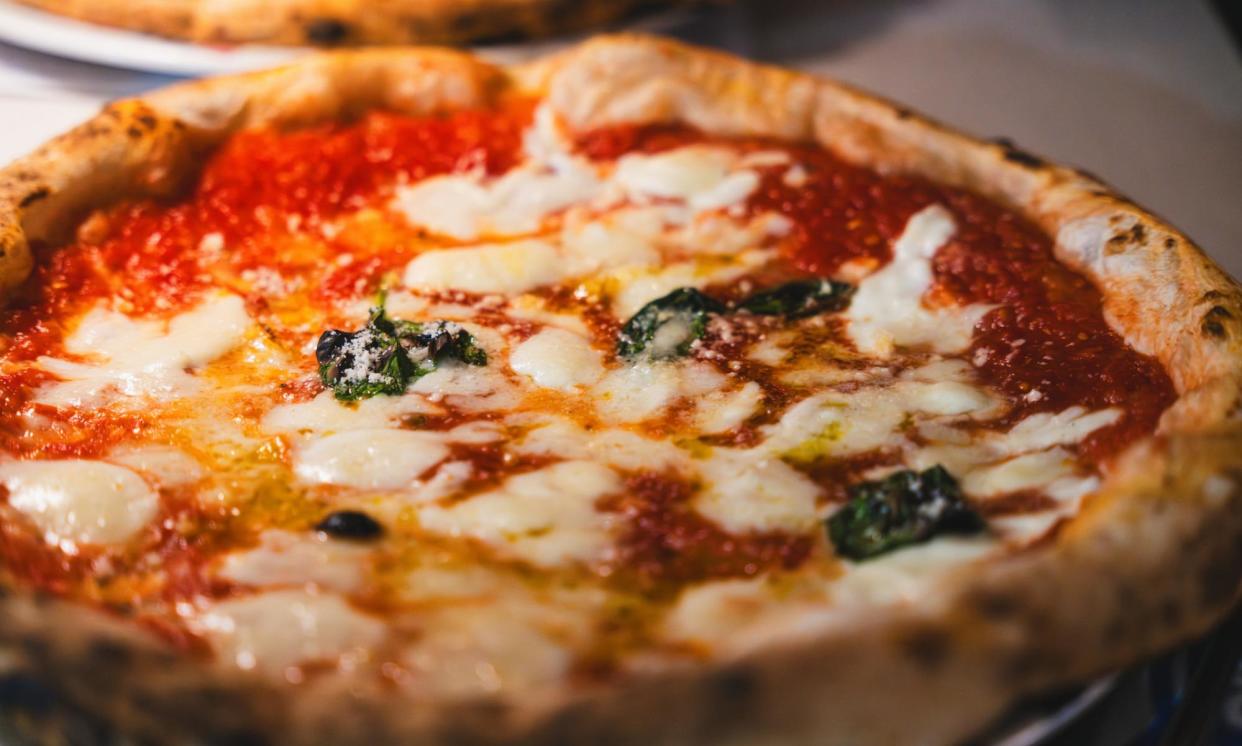‘The ultimate fakeaway’: posh pizzas take over UK supermarket shelves

If you were in the mood for pizza the supermarket choice used to be straightforward – fresh or frozen, thin or thick, margherita or pepperoni – but the UK’s growing appetite for posh pizza is bringing little-known Italian regional specialities and outre toppings to the mainstream.
The traditionally budget-friendly food’s move upmarket is in part driven by demand for “fakeaways” where consumers opt for an upmarket ready meal over a takeaway or eating out. At the same time pizza has never been more fashionable with interest in all forms of the Italian staple fuelled by a buzzing restaurant scene.
With nearly £1.8bn a year spent on fresh and frozen pizza in UK stores, according to analysts NIQ, the market is a huge prize for food brands with the lucrative gap for fancier fare seeing new names come to the fore.
For example, sales at Crosta & Mollica, which tops its sourdough pizzas with ingredients such as smoked provola, fior di latte cheese and Taggiasca olives, have more than doubled in the past year. It claims to be the UK’s only store-bought brand made in Italy, with its pizzas baked in wood-fired ovens on lava stone from Mount Etna, no less.
“We’ve witnessed a definite shift in demand to simple, high-quality pizza with a real depth of flavour,” said Crosta & Mollica’s executive chair, David Milner. “A short ingredients list is increasingly important.”
“Over the years what could be considered by an Italian to be pizza has been hard to find for a UK consumer,” he added, pointing to flavour combinations such as chicken tikka and baked beans.
But if you have just got your head around sourdough, hang on to your hat because the next big thing could be the Roman-style pinsa. It is an increasingly common sight on pizzeria menus with Crosta & Mollica adding it to its product range last year.
Because the pinsa dough has more water in it, it has a “lighter, crisper, cloud-like crumb structure”, explains Milner. “We were quick to embrace this trend. As more consumers discover and embrace this style of pizza base, we think there is potential for further product development and innovation.”
There is no shortage of competition in supermarket fridges, which are jammed with cook-at-home ranges from high street chains including Pizza Express and Franco Manca. But while restaurant-branded products are generally more expensive than other brands or own-brand alternatives, they are still markedly cheaper than in the restaurant or to have delivered.
Eve Edmunds, marketing manager at Franco Manca, says that, as with pinsa, the chain thinks more traditional methods will come to the fore. “The growth of different styles of pizza is leading to increased understanding about the regionality within Italy and the variety of offerings there.”
Other developments on the UK pizza scene, however, might be met in Italy with raised eyebrows.
Waitrose’s new Urban Pizza range includes a carbonara-flavoured pizza topped with pasta, and a “cheeseburger pizza” complete with gherkins and burger sauce. The blurb advises shoppers to “get ready for the ultimate fakeaway”, with the range designed to “evoke the feeling of grabbing your favourite slice from a trendy urban eatery”.
Zoe Simons, Waitrose’s senior development chef, said that the “urban pizza scene is booming with restaurants opening all around the world”. “We wanted to give our customers the same great taste and trends at home.”


